Dhaka on the Buriganga River
Visiting the capital of the South Asian country of Bangladesh

To the east of India on the Bay of Bengal, you’ll find the South Asian country of Bangladesh. In this country, there are many waterways and the Padma (Ganges), Meghna and Jamuna Rivers create fertile plains and one of the most common forms of travel is by boat.
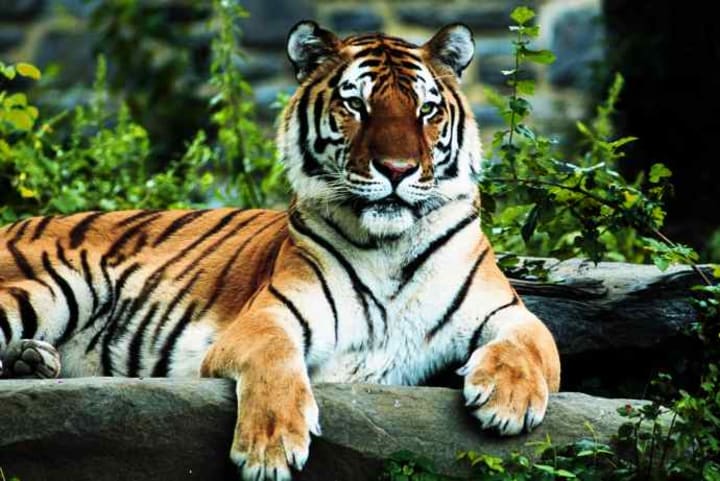
On the southern coast, the Sundarbans, a huge mangrove forest that is shared with Eastern India, is home to the royal Bengal tiger.
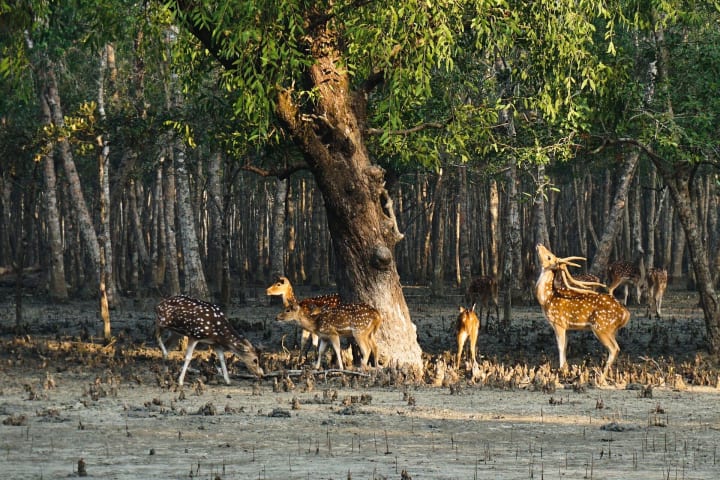
The Sundarbans, mangrove forest is one of the largest such forests in the world and it lies on the delta of the Ganges, Brahmaputra, and Meghna Rivers on the Bay of Bengal. It is a UNESCO World Heritage site and is adjacent to the border of India’s Sundarbans World Heritage site.
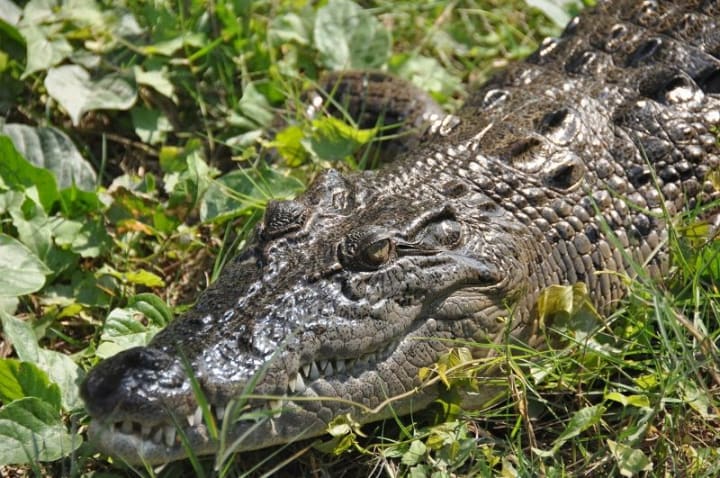
This site is intersected by a complex network of tidal waterways, mudflats, and small islands of salt-tolerant mangrove forests. This area is well-known for its wide range of fauna that includes 260 bird species, the Bengal tiger and other threatened species among them the estuarine crocodile and the Indian python.
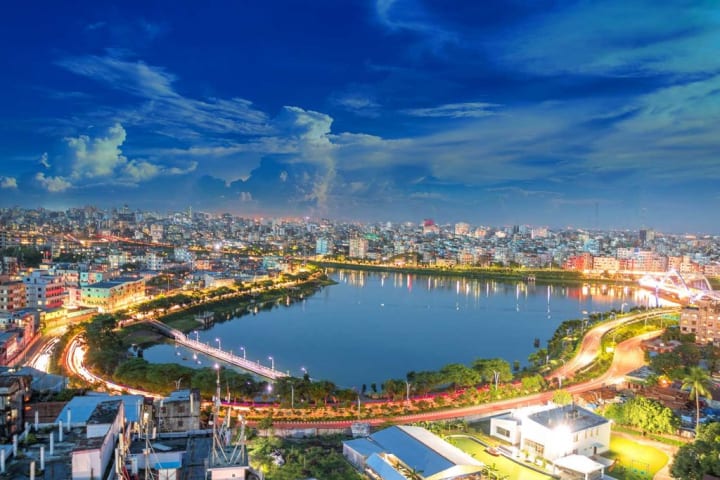
The capital city of Bangladesh, Dhaka, is also the largest city in the country. It is located in a lovely setting beside the Buriganga River. The 17th-century old city was the Mughal capital of Bengal and many of the palaces and mosques still stand.
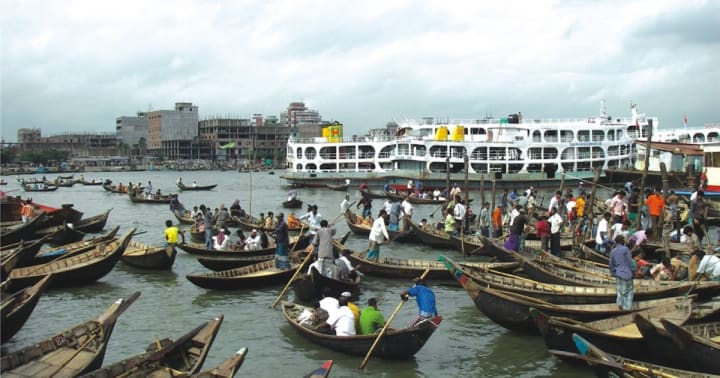
Sadarghat or Sadarghat Port of the Dhaka City River Front is located in the southern part of the city on the Bunganga River. It is one of the most dynamic places in Dhaka and is the largest riverboat terminal port. One of the fascinating ways to see the city is by riding a riverboat. Along the riverfront, you can see children with fishing nets and men cleaning up ship hulls. Among the large ships that sail here are tiny wooden vessels which are also available for hire for a one-hour tour of the river. You can choose to ride on one of the ferries which will take you across the river. The attraction is the trip itself but on the opposite side, you will find clothes shops and stalls, snack stalls, and even tea stands.
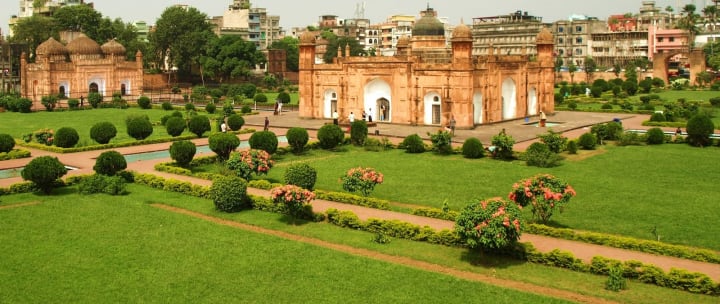
Lalbagh Fort is surrounded by well-tended gardens in which people can stroll and relax. The fort was started in 1677 by Prince Mohammed Azam. The completion of the fort came to Shaista Khan but upon the death of his daughter, Pari Bibi (Fair Lady) which was considered a bad omen the fort was never completed.
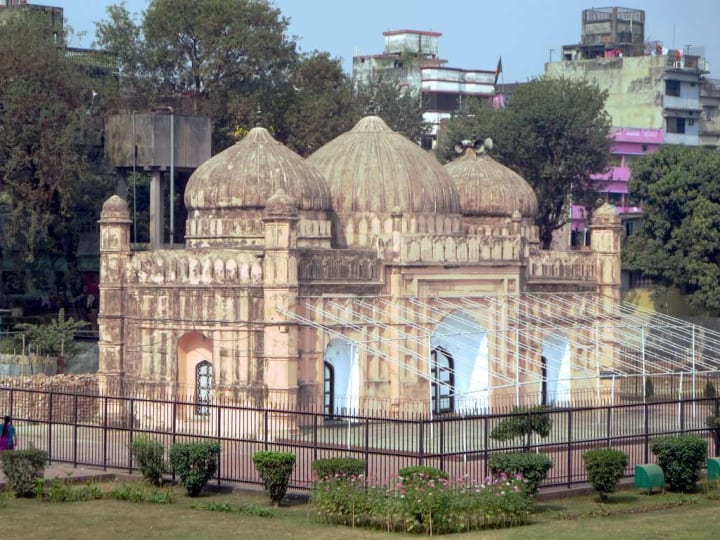
Within the fort complex three architectural monuments were completed – the Mausoleum of Pari Bibi (in the front as you enter), the Diwan or Hall of Audience (to the left), and the three-domed Quilla Mosque (to the right). These all date back to 1684.
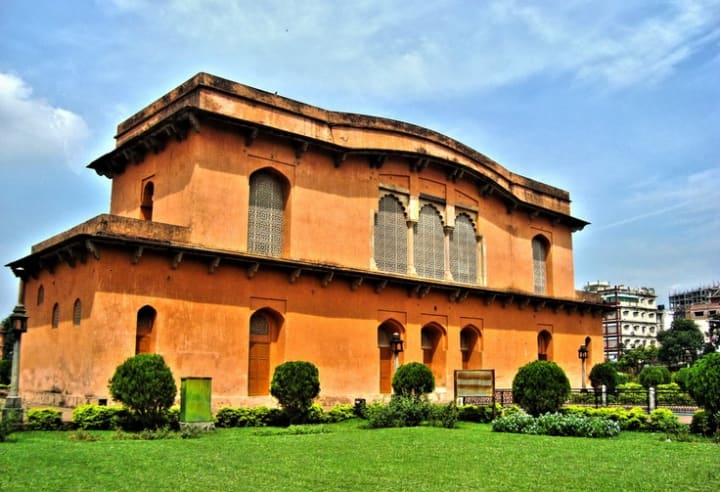
The only monument that can be entered is the Diwan, a two-story structure that houses an excellent museum displaying Mughal miniature paintings, coins, carpets, and calligraphy as well as swords and firearms. In this same building, a massive arched doorway leads to the hammam (bathhouse).
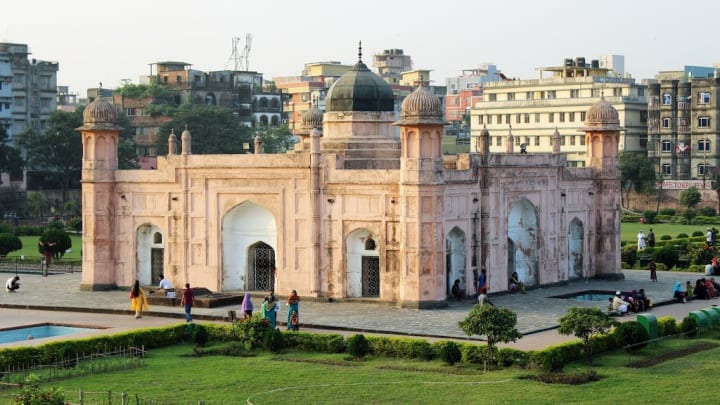
The Mausoleum of Pari Bibi is unusual in the way it was constructed with black basalt, white marble, and encaustic tiles of different colors to decorate the interior. The central chamber, where Pari Bibi is buried entirely in white marble.
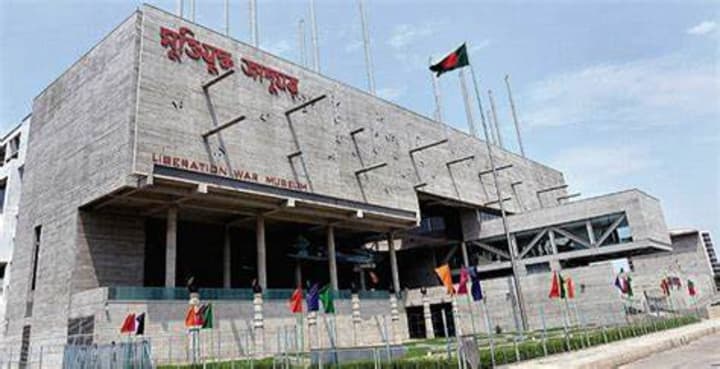
The Liberation War Museum has found a home in a lovely whitewashed colonial-era building. This is a small museum that chronicles the 1971 War of Independence, one of the 20th century’s deadliest wars. Among the displays are a room full of personal items each with a short story of the owner’s life, a large pile of human skulls and bones, and some disturbing photos.
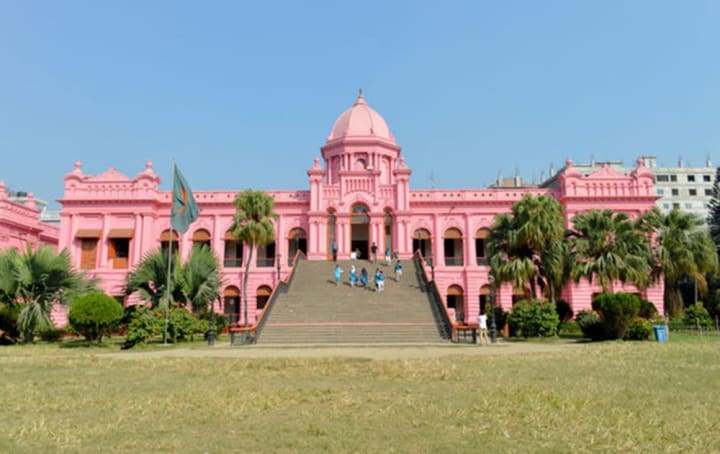
Ahsan Manzil or Pink Palace was built on the site of an old French factory by Nawab Abdul Ghani, the city’s wealthiest landowner. At one time it fell into disrepair but then the palace went through a massive restoration in the late 1980s aided by photos of each of the 23 rooms. These photos are still on display as well as various family portraits and the skull of Nawab Abdul Ghani’s favorite elephant, Feroz Jung.
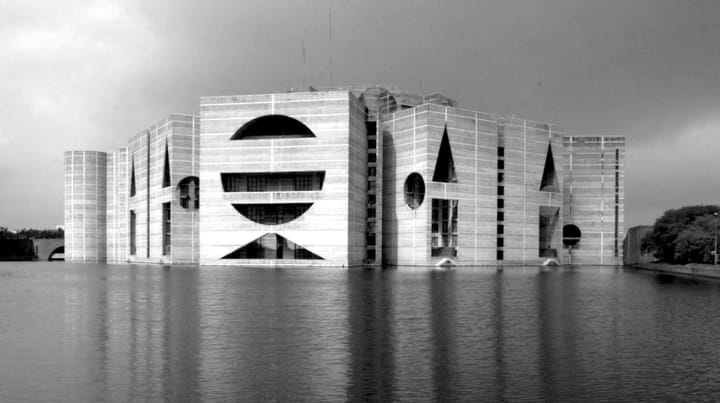
The National Assembly Building due to the liberation movement and the ensuing war wasn’t completed until 1982. This building is often featured in books on modern architecture and is regarded as one of Kahn’s greatest works. It was constructed of concrete cylinders and rectangular boxes with multi-story circular and triangular apertures rather than windows. The building can be entered only on a pre-arranged four-hour guided tour, booked in advance.
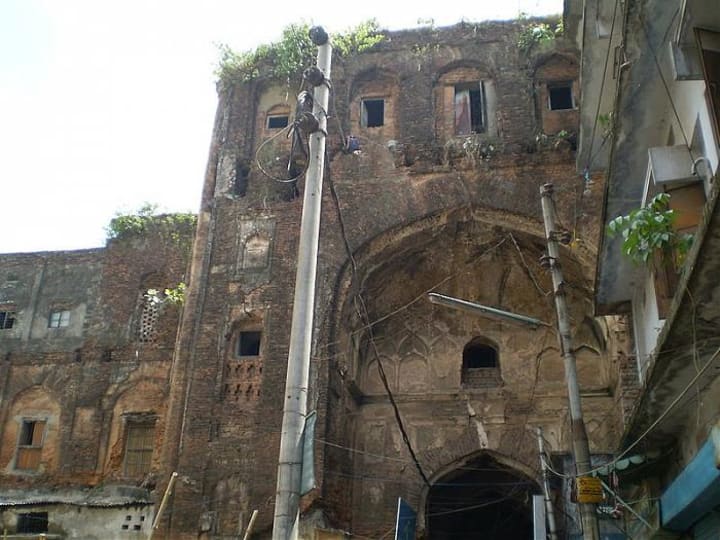
Bara Katra was once a great palace but has since become a dilapidated Mughal-era structure and is one of the oldest buildings in Dhaka. It was built in 1644 and now has a street running through its arched entrance. Only a small portion of the original structure still stands and the building is now mostly used for storerooms. On the top, you can find a small prayer room.
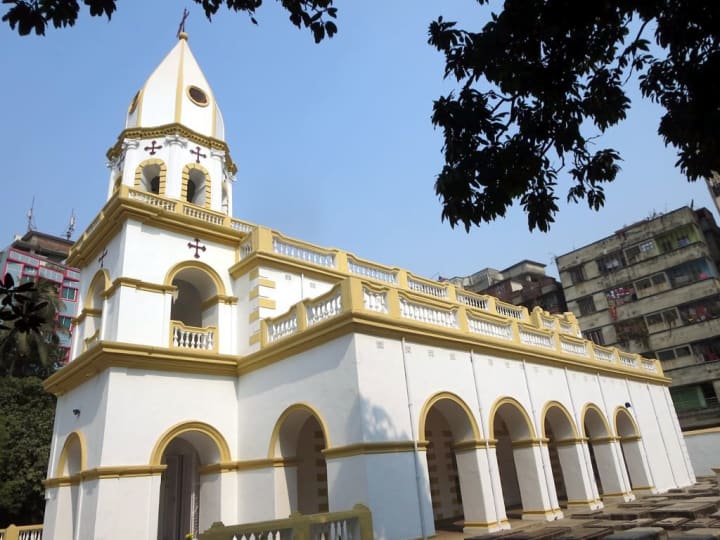
You’ll find the Armenian Church of the Holy Resurrection in a small area that is known as Armanitola. It was named after the Armenian colony that settled here in the late 17th century. This white and lemon-painted church dates back to 1781. There are many beautiful gravestones with Armenian inscriptions. There is a caretaker on the premises who has helped with church restoration and enjoys giving personal tours. He unlocks the gates for visitors.
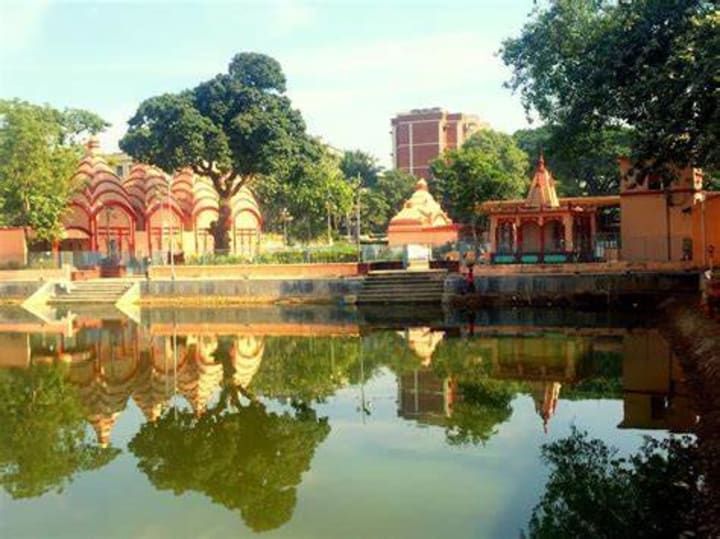
Dhakeshwari Temple is the center of the Hindu faith in Bangladesh. It is dedicated to Dhakeswari, the protector of Dhaka and an incarnation of the goddess Durga. Visitors are welcome at any time but must remove their shoes before entering. Every year in September (the exact dates are per the Hindu calendar) the temple and surrounding streets are full of celebrants for Durga Puja, the goddess’ annual festival.
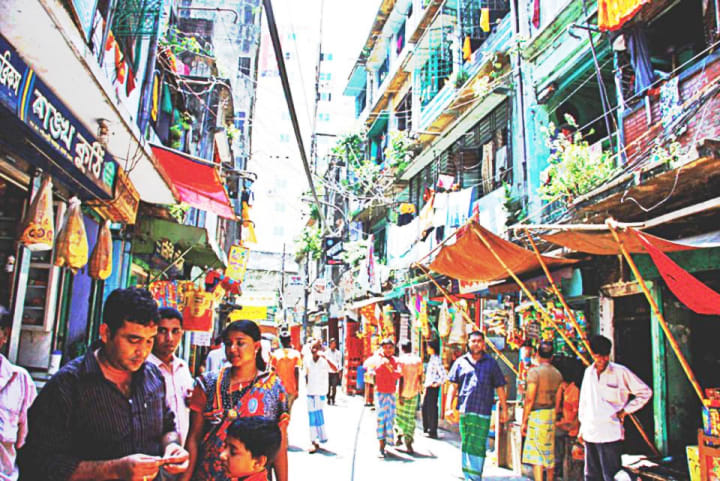
For colorful excitement and atmosphere head for the Shankharia Bazar. You can smell incense in the air. Along the street, you’ll find old houses, garlands of orange marigolds, and dark doorways that lead to tiny shops and workshops. This is the most photogenic part of Old Dhaka. Here Shankharis (Hindu artisans), whose ancestors came here more than 300 years ago, work on creating kites, gravestones, wedding hats, and even bangles made of conch shells. This is a flamboyant area during Hindu festivals.
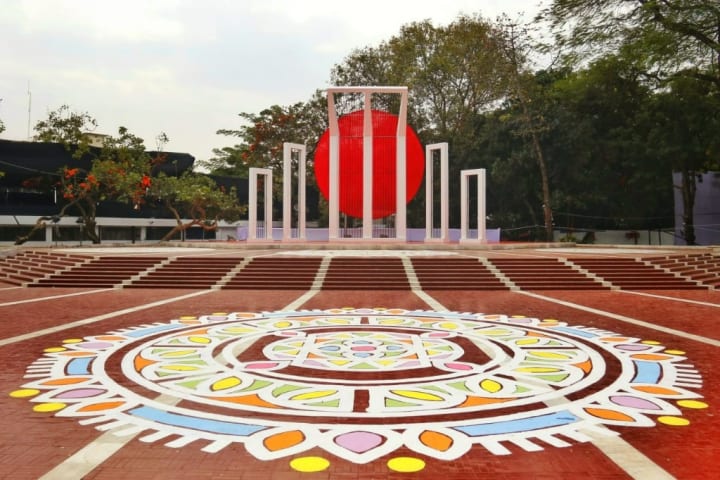
Central Shaheed Minar in front of the Dhaka Medical College, University of Dhaka is a symbol of Bengali nationalism. The monument was built to commemorate the martyrs of the historic language movement of 1952. Here people gather with floral wreaths and bouquets on February 21 to pay respect to the departed. This date was designated by the UN as International Mother Language Day due to the event and celebrations that begin at midnight.
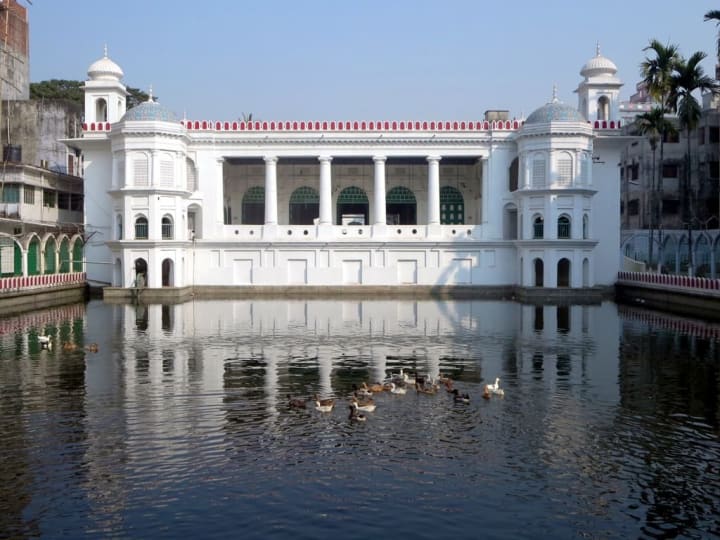
The Islamic building Hussaini Dalan was built in 1642 as the house of the imam of the Shi’la community. The architecture might seem Baroque but the original building was Mughal. Restoration changed the building after the 1897 earthquake but a silver filigree model of the original building can be seen in the National Museum.
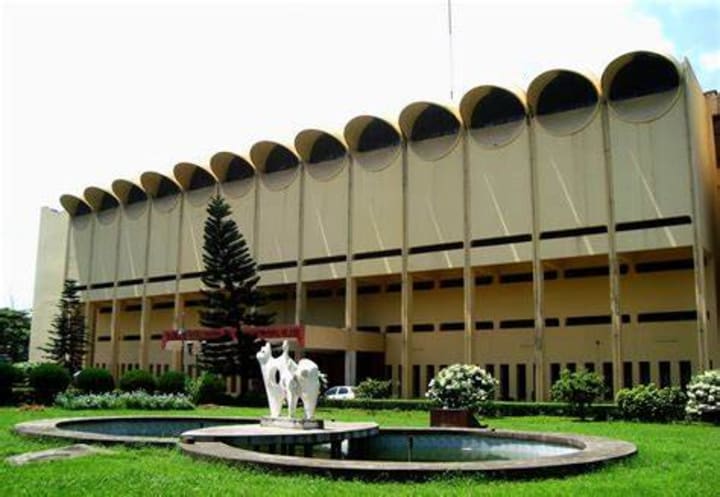
The excellent National Museum has several floors. It begins with the geological formation of Bangladesh and takes visitors through the nation’s flora and fauna, through a Buddhist and Hindu past, and brings them up to date with the War of Liberation and the creation of the modern state. Among the highlights are 6th-century terracotta Hindu plaques, Buddhist statuary, vignettes of village life, and a wooden river racing boat.
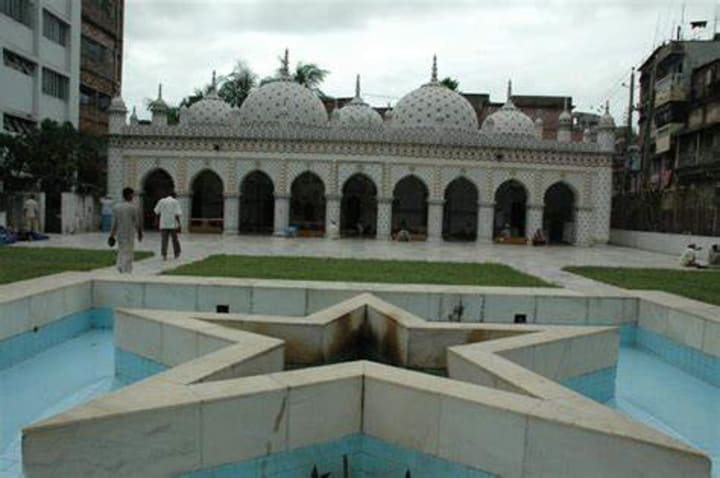
The unusual Star Mosque has striking mosaic decoration and dates back to the early 18th century. Originally it was built in a typical Mughal style with four corner towers. About 50 years ago a local businessman financed its redecoration with Japanese and English porcelain tiles and the addition of a new verandah. Looking closely you can see tiles illustrated with pictures of Mt. Fuji.
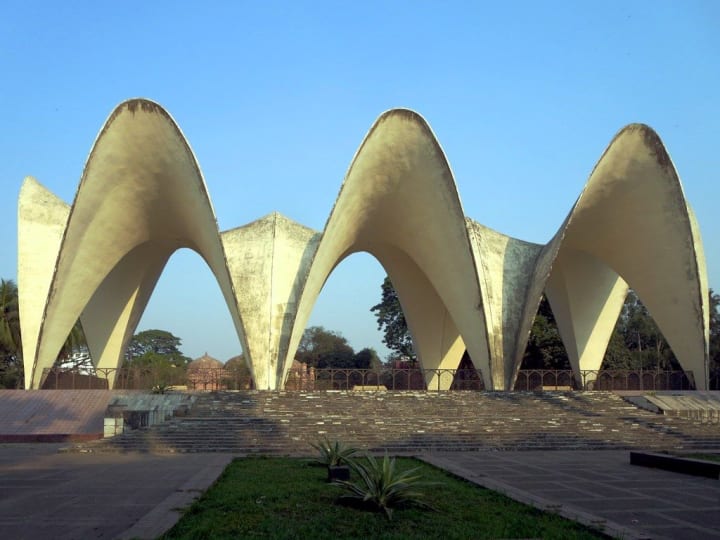
Within the park, you’ll find the Mausoleum of Three Leaders, a significant architectural monument. Here are the graves of three pre-liberation politicians from Bengal in the 20th century – A.K. Fazlul Huq, Huseyn Shaheed Suhrawardy, and Khwaja Nazimuddini. All three men served as the Prime Minister of Bengal in British India.
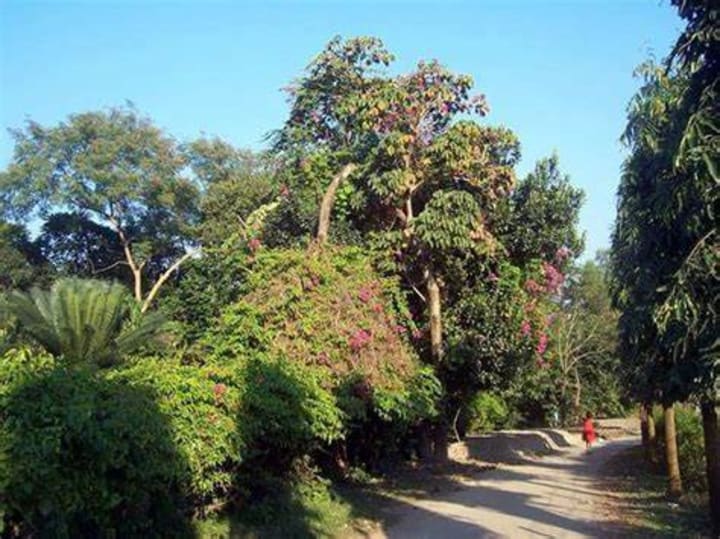
The National Botanical Garden of Bangladesh is a shady, tranquil place that stretches for more than 40 hectares and is home to more than 1000 species of local and foreign plants. Birds flock to the lakes and ponds here. In the distance, you can see the Turag River. The garden has around 56,000 trees, herbs, and shrubs among them a huge collection of aquatic plants. You’ll find thousands of migratory birds here during the wintertime.
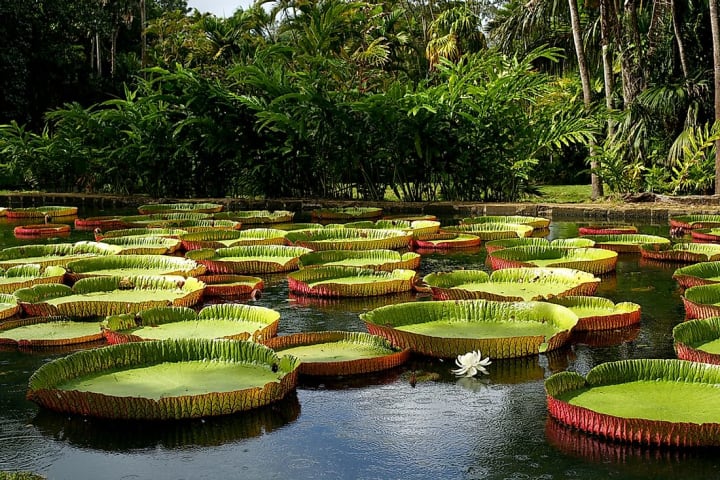
Among the rare and exotic plant species are Victoria amazonica and the African tulip tree.
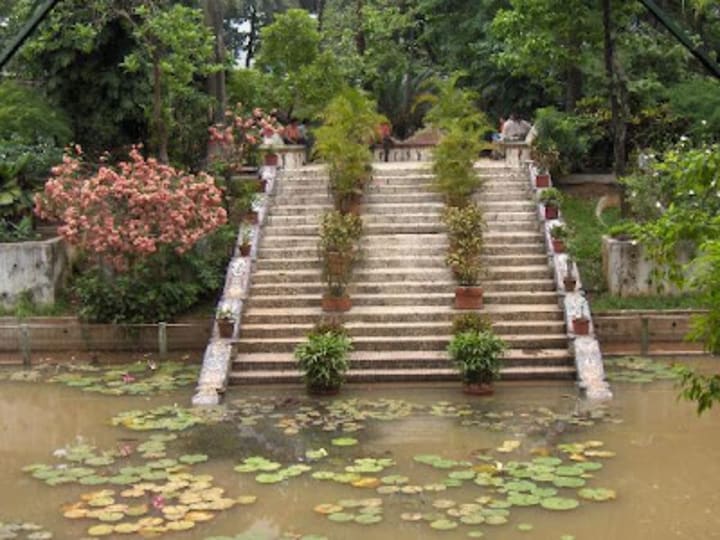
If you’re looking to relax head for the Baldha Gardens. The two walled enclosures, Cybele and Psyche were once the private gardens of Narendra Narayan Roy, a wealthy landlord, whose grandson gave the gardens to the government in 1962 as a tribute to the family. There are many indigenous and exotic plants. In the Psyche section are a lily pond, a massive sundial, blue nympheas, papyrus, and other kinds of plants.
About the Creator
Rasma Raisters
My passions are writing and creating poetry. I write for several sites online and have four themed blogs on Wordpress. Please follow me on Twitter.


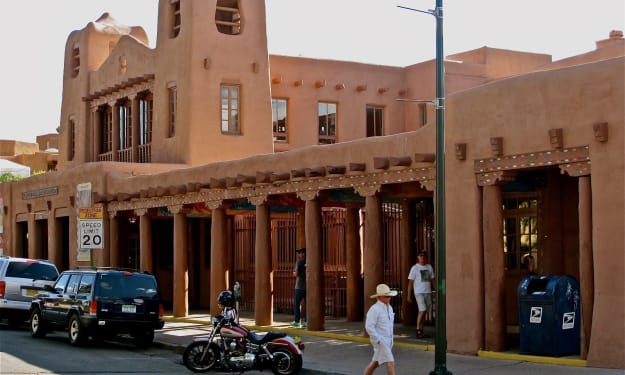



Comments
There are no comments for this story
Be the first to respond and start the conversation.